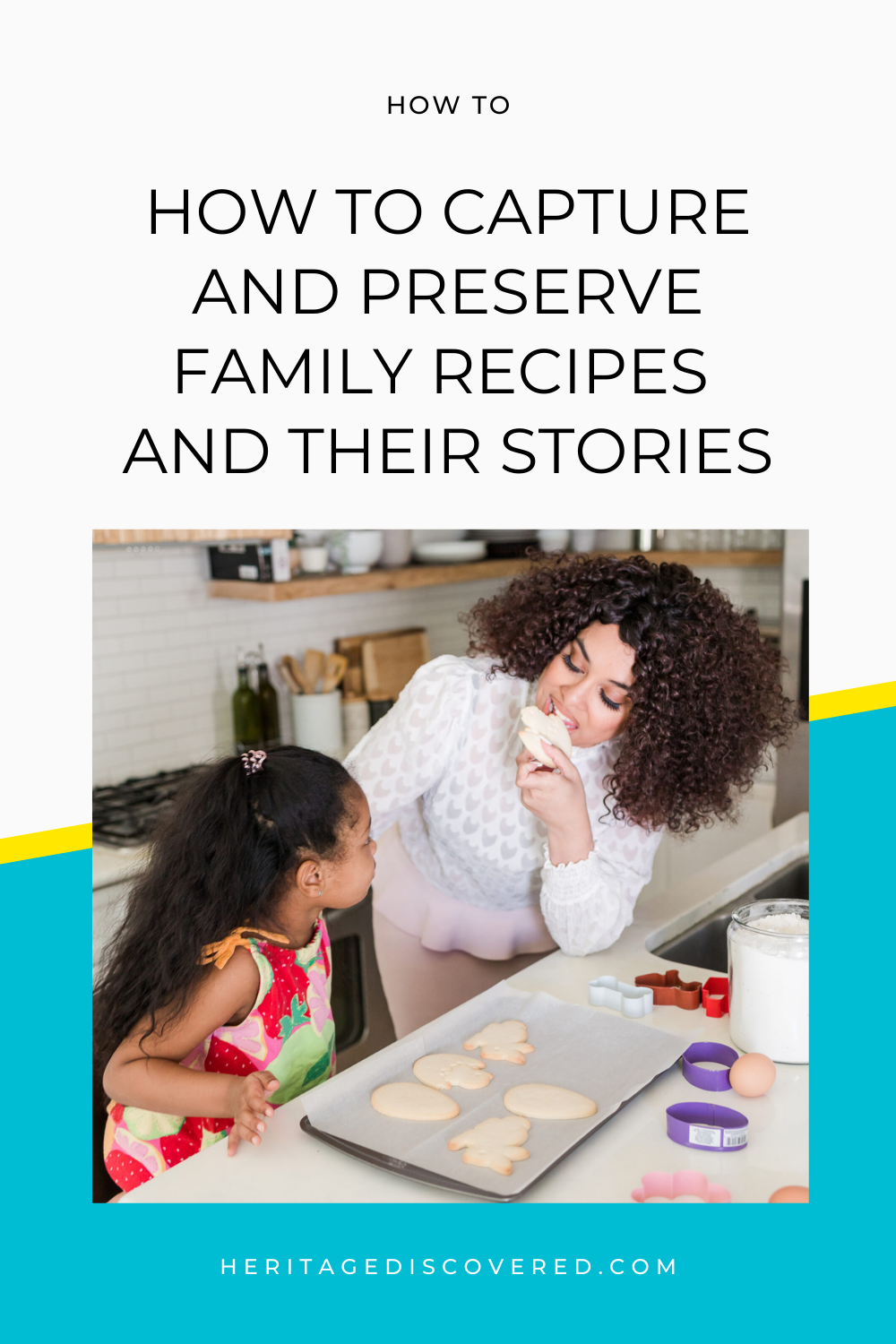Why Family Recipes And Their Stories Are Important And How To Preserve Them
*This post may have affiliate links, which means I may receive commissions if you choose to purchase through links I provide (at no extra cost to you). All opinions remain my own.
Genealogy isn’t only about the names and dates of our ancestors (although those are important, of course).
It’s also about social history and what their lives were like.
Food is a key part of the social history of our ancestors. It ties people and families together. Kitchens are often the heart of a house, where many great memories are made.
We can find our family history through recipes and food traditions.
Both of these connect us to our ancestors and helps us to understand their everyday lives and link us to our culture and roots.
For example, handwritten recipes tell you not only what women (or men) were making, but also show you their handwriting. Sometimes you may find their thoughts on the ingredients or directions. Being able to see their handwriting and notes is so special!
Smell and taste are memory triggers and can evoke fond recollections of people and the times you had with them.
In this article, I discuss the importance of family recipes and passing down recipes in families.
Related posts:
How To Find And Get To Know Female Ancestors With Community Cookbooks
31 Family History Interview Questions to Bring Out Their Memories
What do recipes tell us about our family history?
Food can tell us a lot about family history.
Whether you have family recipes passed down to you or simply enjoy cooking heritage dishes, these can connect you to your roots and to memories.
Like, baking cookies with your grandma. When you ate a specific meal at a family dinner or when you made it with your mom and aunt.
Family recipes bridge the generations. Even if you never made that dish with a relative, you could see their writing or picture them making it.
Food can connect you with making the same things that generations of your family made before you.
Making these foods for your kids, or other family or friends, keeps the institution going, even with your own spin on things. It also acknowledges the contributions of the people before us and how their taste influenced the things the family ate, even to this day.
Preserving family recipes and passing them along honors your lineage.
And if you don’t have any passed down to you through the generations, that’s okay, too. Preparing traditional fare for your ethnic heritage can still connect you to your roots.
Probably every Irish person has had soda bread and/or stuffed cabbage (I’ve had So.Much.Soda.Bread). Those with German heritage may have warm recollections of eating potato dumplings or pfeffernusse cookies.
Heritage cuisine could be regional, as well.
My dad is from New England and my mom is from Hawaii and I grew up eating regional things like Indian pudding, baked beans, haupia, and kalua pork. I have great memories and a soft spot in my heart for all of it.
If you don’t have a lot of food institutions in your family, try making things from their culture or place they lived.
Create your own legacies!
There are many cookbooks and blogs out there to help guide you, such as:
Sweet Life, with South Texas flavors
Rooted in Foods, who celebrates her German heritage
Polish Your Kitchen shares Polish recipes and cultural articles
The Woks of Life has not only recipes but articles on cooking methods and life, like how to do a Chinese wedding tea ceremony.
Related posts:
12 Books To Get Kids Excited About Family History
How Probate Records Can Help You Find Your Female Ancestors
Can’t Find Your Women Ancestors? You Need To Try Using Religious Records
Collecting family heirloom recipes and their stories
Get started on collecting the stories about family recipes and traditions with writing down your own remembrances of them.
And remember, these don’t have to be old. They could have started with your mom, dad, or cousin.
Here are a few ideas of questions to ask yourself and others to get you started:
1) What are food customs have you practiced and what memories do you have of them?
2) What were the foods? Were they entrées or snacks, a whole menu, or a way of eating something?
3) When was the dish made? Special occasions or an everyday meal or treat? Why was it important to the occasion?
4) Who taught you to make it? What do you remember about the times you made it with them?
5) What is a favorite memory about a time you ate that thing?
After you’ve recorded your thoughts, reach out to family and gather their stories about the same dishes. You may be surprised what you learn about its origin or what they remember about them.
My dad’s cousin told me my great-grandmother made great doughnuts and it was a treasured treat for him. I don’t have the instructions, but since he’s still talking about them over 60 years later, they must be a cherished memory.
Related posts:
How do you preserve family recipes?
If you're reading this article, it's safe to bet you might be wondering how to preserve family recipes.
First and foremost, as tempting as it might be, you shouldn’t be cooking with the originals and getting liquids or anything else near them, just in case. Protect those precious papers!
1) Remove any bindings that may be on them, like staples or metal paperclips. These can damage the papers.
2) Digitize them. You can then use copies when you want to make one of them.
3) Put the originals in the proper archival storage. Which preservation supplies you choose depends on the papers themselves. Pick supplies based on what size they are, like recipe cards, full sheets of paper, or random scraps of paper in different sizes.
No matter the size, you want to use archival-grade acid-free plastic sleeves.
Gaylord Archival and Hollinger Metal Edge have great options in different sizes and quantities.
Amazon also has options, like this and this.
If you’re looking for more tips on gathering and preserving these little treasures, check out Preserving Family Recipes: How to Save and Celebrate Your Food Traditions by Valerie J. Frey and From the Family Kitchen: Discover Your Food Heritage and Preserve Favorite Recipes by Gena Philibert-Ortega.
How do you record family recipes and share them?
Not only are the recipes heirlooms, so are the stories about them.
After you’ve captured these from your family, put them together and share them so everyone can have copies.
A few ideas of ways you can do this are:
1) Create a print or digital cookbook. There are places online you can put together and publish a book, like Blurb.
Online marketplaces like Etsy have templates you can use to make a digital version to share.
Even Word has a free cookbook template.
Add in any stories about them.
2) Have a potluck at a family reunion and have everyone cook a special family dish. Take a picture of the person and their contribution and give out the recipes later.
3) Create a blog and write about them. Your relatives can add even more thoughts in the comments.
Related posts:
How to Strengthen Your Cemetery Research Skills to Find More Clues
If this post was helpful, please consider “buying me a coffee”. Tips through Ko-Fi help me create more content like this for you!
Thank you for supporting my small business!
Final thoughts
Heirlooms don’t have to be pieces of furniture or jewelry. They can be much simpler, but no less cherished.
Whether passed down in writing or orally, family recipes are heirlooms.
Take some time to reflect on the customs and stories around food in your family and record them. Share them with other relatives. Start your own customs!
What is your favorite family recipe?



